
Rabbit Anti-phospho-RAD51 (Thr309)antibody
RAD51(phospho T309); BRCA1/BRCA2 containing complex, subunit 5; BRCC 5; BRCC5; DNA repair protein RAD51 homolog 1; DNA repair protein rhp51; E coli RecA homolog; HGNC:9817; Homolog of E coli RecA; homolog of S cerevisiae RAD51; HRAD51; HsRad51; HsT16930;
View History [Clear]
Details
Product Name phospho-RAD51 (Thr309) Chinese Name 磷酸化Rad51抗体 Alias RAD51(phospho T309); BRCA1/BRCA2 containing complex, subunit 5; BRCC 5; BRCC5; DNA repair protein RAD51 homolog 1; DNA repair protein rhp51; E coli RecA homolog; HGNC:9817; Homolog of E coli RecA; homolog of S cerevisiae RAD51; HRAD51; HsRad51; HsT16930; Rad 51; RAD51 homolog (RecA homolog, E. coli) (S. cerevisiae); RAD51 homolog; RAD51 homolog S. cerevisiae; RAD51 S cerevisiae homolog; RAD51A; RECA; RecA homolog E. coli; RecA like protein; RecA, E. coli, homolog of; recombination protein A. literatures Product Type Phosphorylated anti Research Area Tumour immunology Signal transduction Immunogen Species Rabbit Clonality Polyclonal React Species Human, Mouse, (predicted: Rat, Chicken, Dog, Pig, Cow, Rabbit, Sheep, ) Applications WB=1:500-2000 ELISA=1:5000-10000 IHC-P=1:100-500 IHC-F=1:100-500 Flow-Cyt=1ug/Test ICC=1:100 IF=1:100-500 (Paraffin sections need antigen repair)
not yet tested in other applications.
optimal dilutions/concentrations should be determined by the end user.Theoretical molecular weight 37kDa Cellular localization The nucleus cytoplasmic Form Liquid Concentration 1mg/ml immunogen KLH conjugated Synthesised phosphopeptide derived from human RAD51 around the phosphorylation site of Thr309: GE(p-T)RI Lsotype IgG Purification affinity purified by Protein A Buffer Solution 0.01M TBS(pH7.4) with 1% BSA, 0.03% Proclin300 and 50% Glycerol. Storage Shipped at 4℃. Store at -20 °C for one year. Avoid repeated freeze/thaw cycles. Attention This product as supplied is intended for research use only, not for use in human, therapeutic or diagnostic applications. PubMed PubMed Product Detail The protein encoded by this gene is a member of the RAD51 protein family. RAD51 family members are highly similar to bacterial RecA and Saccharomyces cerevisiae Rad51, and are known to be involved in the homologous recombination and repair of DNA. This protein can interact with the ssDNA-binding protein RPA and RAD52, and it is thought to play roles in homologous pairing and strand transfer of DNA. This protein is also found to interact with BRCA1 and BRCA2, which may be important for the cellular response to DNA damage. BRCA2 is shown to regulate both the intracellular localization and DNA-binding ability of this protein. Loss of these controls following BRCA2 inactivation may be a key event leading to genomic instability and tumorigenesis. Two alternatively spliced transcript variants of this gene, which encode distinct proteins, have been reported. Transcript variants utilizing alternative polyA signals exist.
Function:
Participates in a common DNA damage response pathway associated with the activation of homologous recombination and double-strand break repair. Binds to single and double stranded DNA and exhibits DNA-dependent ATPase activity. Underwinds duplex DNA and forms helical nucleoprotein filaments. Plays a role in regulating mitochondrial DNA copy number under conditions of oxidative stress in the presence of RAD51C and XRCC3.
Subcellular Location:
Nucleus. Cytoplasm. Cytoplasm, perinuclear region. Mitochondrion matrix. Note=Colocalizes with RAD51AP1 and RPA2 to multiple nuclear foci upon induction of DNA damage. DNA damage induces an increase in nuclear levels.
Tissue Specificity:
Highly expressed in testis and thymus, followed by small intestine, placenta, colon, pancreas and ovary. Weakly expressed in breast.
Post-translational modifications:
Phosphorylated. Phosphorylation of Thr-309 by CHEK1 may enhance association with chromatin at sites of DNA damage and promote DNA repair by homologous recombination. Phosphorylation by ABL1 inhibits function.
DISEASE:
Defects in RAD51 are a cause of susceptibility to breast cancer (BC) [MIM:114480]. A common malignancy originating from breast epithelial tissue. Breast neoplasms can be distinguished by their histologic pattern. Invasive ductal carcinoma is by far the most common type. Breast cancer is etiologically and genetically heterogeneous. Important genetic factors have been indicated by familial occurrence and bilateral involvement. Mutations at more than one locus can be involved in different families or even in the same case.
Similarity:
Belongs to the RecA family. RAD51 subfamily.
Contains 1 HhH domain.
SWISS:
Q06609
Gene ID:
5888
Database links:Entrez Gene: 5888 Human
Entrez Gene: 19361 Mouse
Omim: 179617 Human
SwissProt: Q06609 Human
SwissProt: Q08297 Mouse
Unigene: 631709 Human
Unigene: 330492 Mouse
Unigene: 20474 Rat
Rad51蛋白对细胞调节有重要作用:作为辅助因子参与DNA修复同源重组,维持正常细胞周期;Rad51蛋白在很多组织中都有不同的存在。在乳腺癌和消化系统等恶性Tumour组织中表达较高,究其原因有报道称:这是DNA被损伤后细胞的一种反应,而这种反应不足以阻止癌变的发生。Product Picture
Bone (Mouse) Lysate at 40 ug
Primary: Anti-phospho-RAD51 (Thr309) (SL5677R) at 1/1000 dilution
Secondary: IRDye800CW Goat Anti-Rabbit IgG at 1/20000 dilution
Predicted band size: 37 kD
Observed band size: 37 kD
Sample:
Bone (Mouse) Lysate at 40 ug
Primary: Anti- phospho-RAD51 (Thr309) (SL5677R) at 1/1000 dilution
Secondary: IRDye800CW Goat Anti-Rabbit IgG at 1/20000 dilution
Predicted band size: 37 kD
Observed band size: 37 kD
Paraformaldehyde-fixed, paraffin embedded (human laryngeal carcinoma); Antigen retrieval by boiling in sodium citrate buffer (pH6.0) for 15min; Block endogenous peroxidase by 3% hydrogen peroxide for 20 minutes; Blocking buffer (normal goat serum) at 37°C for 30min; Antibody incubation with (phospho-RAD51 (Thr309)) Polyclonal Antibody, Unconjugated (SL5677R) at 1:200 overnight at 4°C, followed by operating according to SP Kit(Rabbit) (sp-0023) instructionsand DAB staining.Paraformaldehyde-fixed, paraffin embedded (human gastric carcinoma); Antigen retrieval by boiling in sodium citrate buffer (pH6.0) for 15min; Block endogenous peroxidase by 3% hydrogen peroxide for 20 minutes; Blocking buffer (normal goat serum) at 37°C for 30min; Antibody incubation with (phospho-RAD51 (Thr309)) Polyclonal Antibody, Unconjugated (SL5677R) at 1:200 overnight at 4°C, followed by operating according to SP Kit(Rabbit) (sp-0023) instructionsand DAB staining.NIH/3T3 cell; 4% Paraformaldehyde-fixed; Triton X-100 at room temperature for 20 min; Blocking buffer (normal goat serum, C-0005) at 37°C for 20 min; Antibody incubation with (phospho-RAD51 (Thr309)) polyclonal Antibody, Unconjugated (SL5677R) 1:100, 90 minutes at 37°C; followed by a conjugated Goat Anti-Rabbit IgG antibody at 37°C for 90 minutes, DAPI (blue, C02-04002) was used to stain the cell nuclei.Blank control (Black line):Molt4 (Black).
Primary Antibody (green line): Rabbit Anti-phospho-RAD51(Thr309) antibody (SL5677R)
Dilution: 1μg /10^6 cells;
Isotype Control Antibody (orange line): Rabbit IgG .
Secondary Antibody (white blue line): Goat anti-rabbit IgG-AF647
Dilution: 1μg /test.
Protocol
The cells were fixed with 4% PFA (10min at room temperature)and then permeabilized with 90% ice-cold methanol for 20 min at room temperature. The cells were then incubated in 5%BSA to block non-specific protein-protein interactions for 30 min at room temperature .Cells stained with Primary Antibody for 30 min at room temperature. The secondary antibody used for 40 min at room temperature. Acquisition of 20,000 events was performed.
Bought notes(bought amounts latest0)
No one bought this product
User Comment(Total0User Comment Num)
- No comment
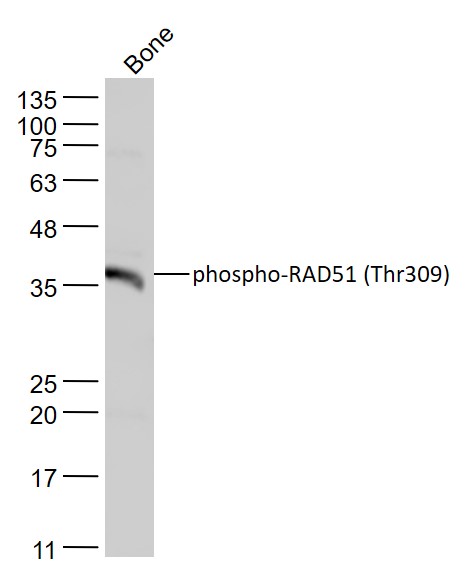
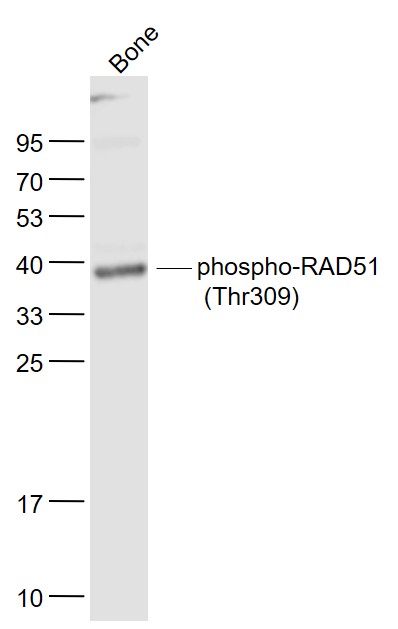
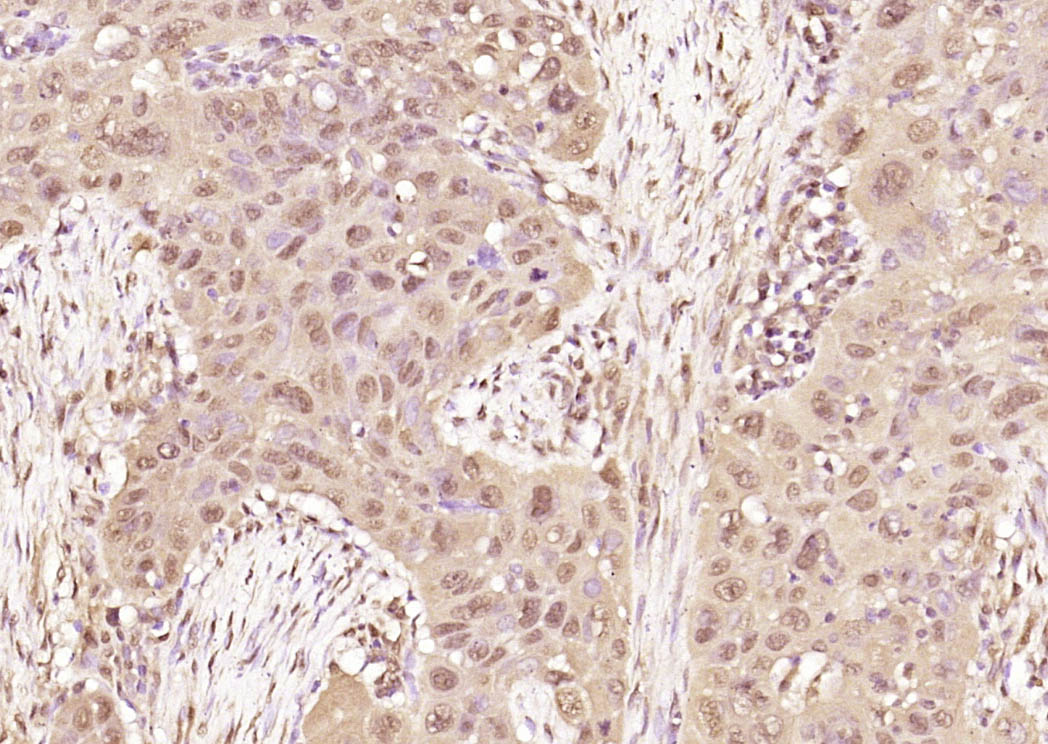
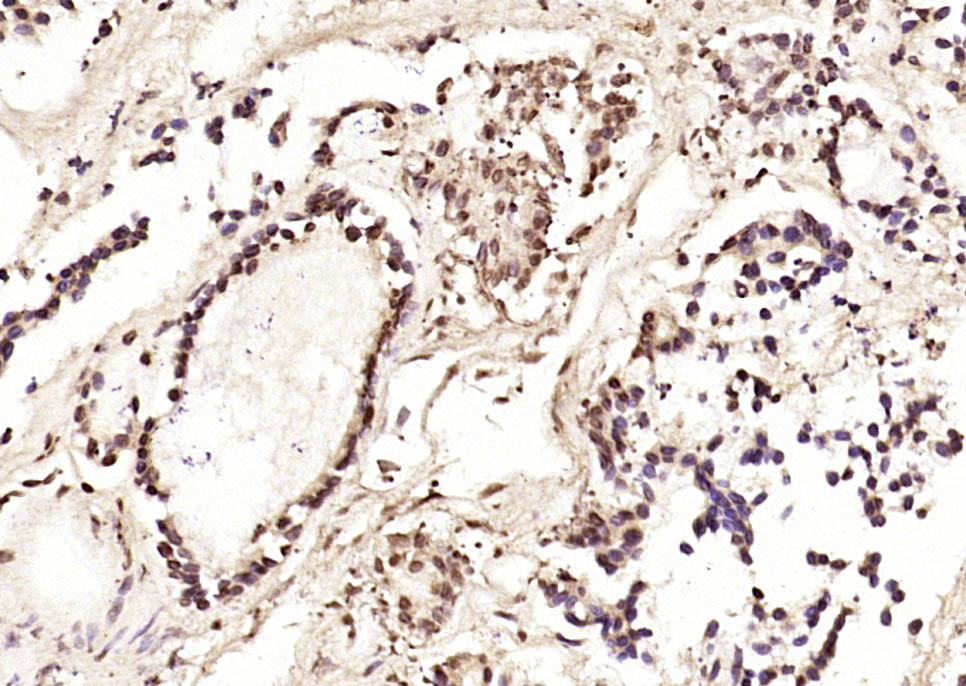
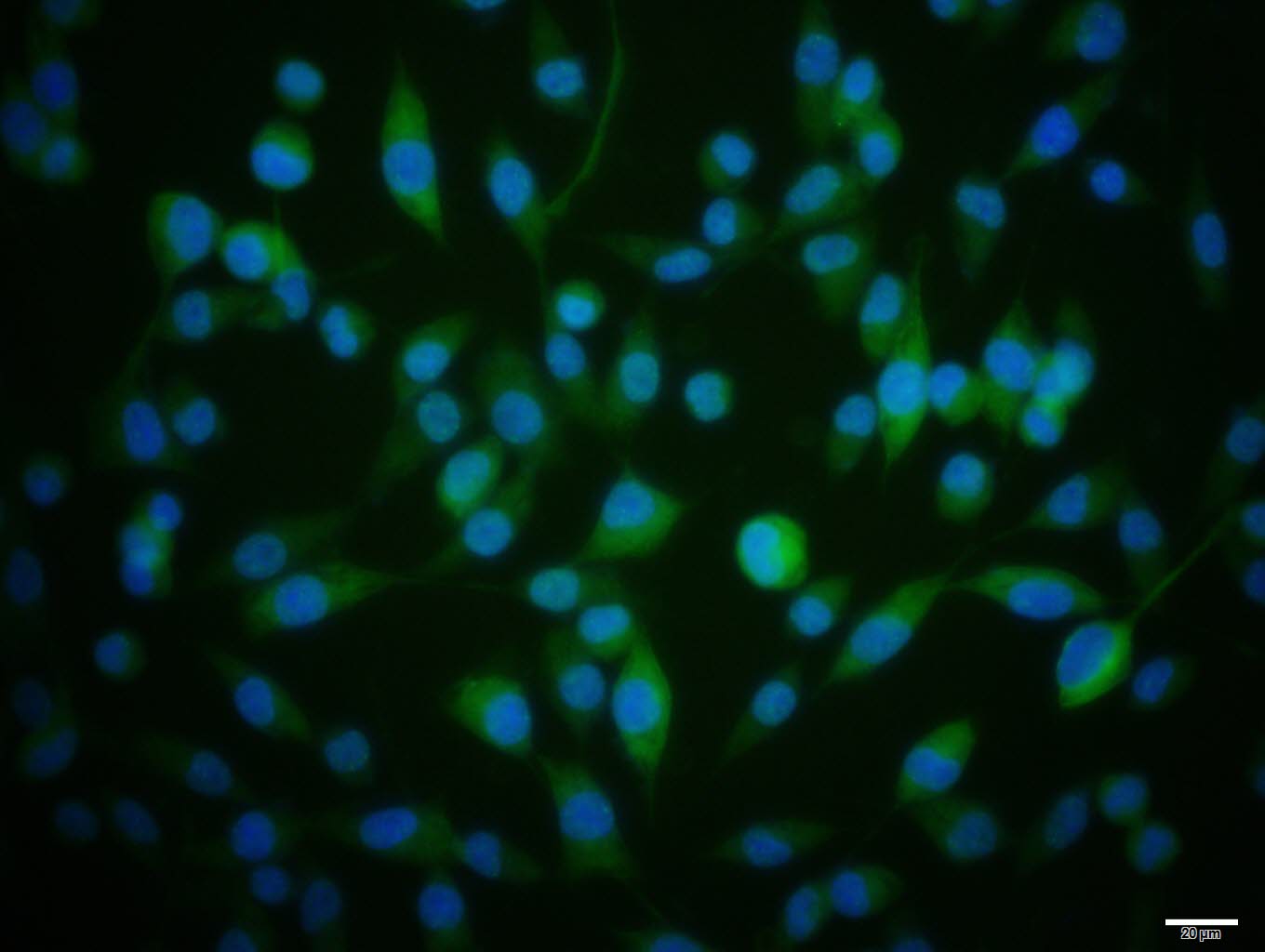
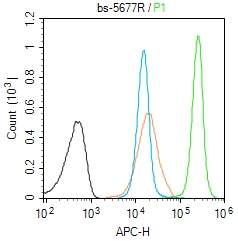


 +86 571 56623320
+86 571 56623320
 +86 18668110335
+86 18668110335

